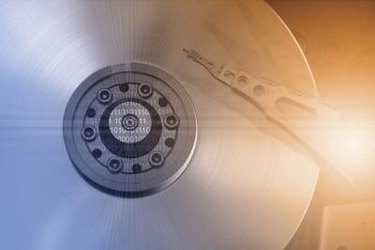
Bad sectors can appear on hard disks, corrupting files and interrupting a computer’s use. A hard drive’s platen travels at up to 15,000 revolutions per minute, the magnetic head hovering mere microns above the writing surface. With little room for error, a hard drive “crash” can easily damage valuable data. Luckily, you may not need a professional data recovery service; you can recover hard drive files and relocate “bad blocks” to allow the hard disk drive to continue safely storing information.
Step 1
Back up or create an image of your drive to protect yourself from data loss. An image of your drive recreates your applications, data, music, photos byte-by-byte, which is useful if recovery of the original drives fails. Backup typically stores only your files -- data, music and photos, for example. A number of applications are available, which either recover data or make an exact copy, or image, of your hard disk. Backup and restoration applications include DiskPatch, Hard Disk Drive Data Recovery and AllImage (full links in Resources).
Video of the Day
Step 2
Detect the bad sectors using Windows utilities. Windows’ DiskFragmenter detects and segregates bad sectors, while most anti-malware utilities uncover malicious software mimicking bad sectors. Bad sectors are caused either by hardware errors or problems induced by software.
Step 3
Click the "Start" button and type Disk Deframenter in the search box. Select "Disk Defragmenter" to open the program.
Step 4
Select your disk from the in the "Under Current" status. Click "Analyze disk" to check for bad sectors, and enter the administrator password, if necessary. Click "Defragment disk" if you know that the disk has bad sectors due to poor performance or other system errors. Enter the administrator password, if necessary.
Video of the Day